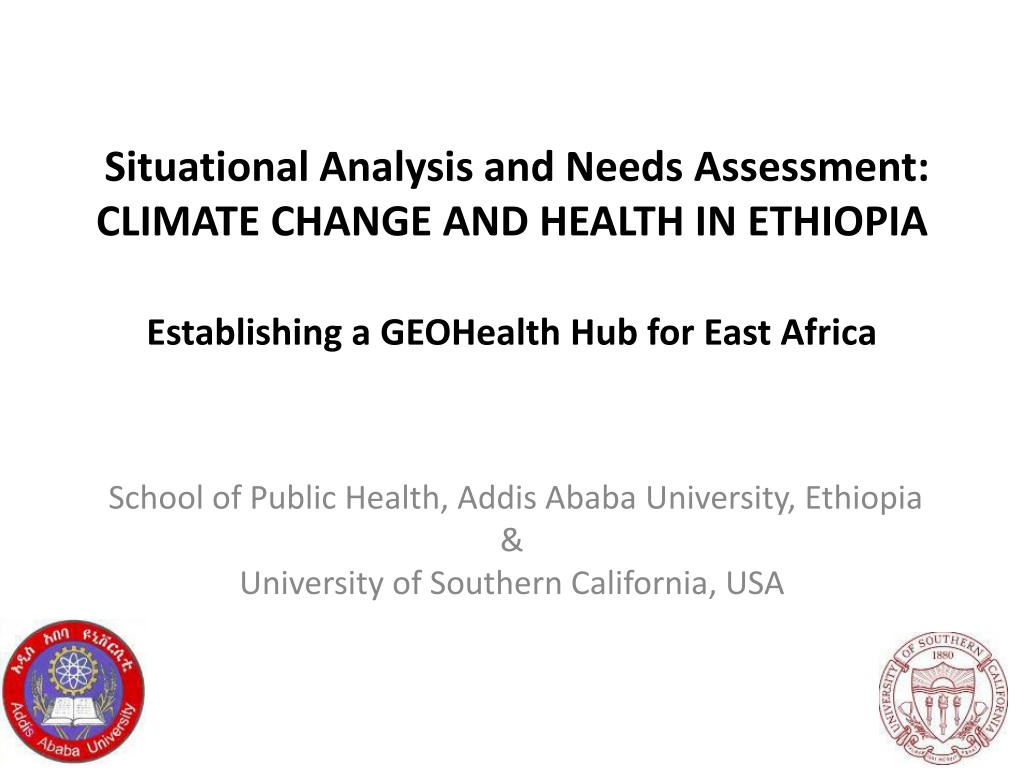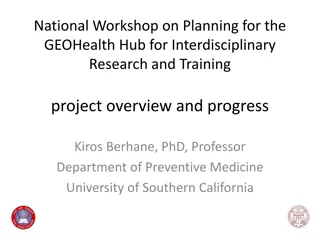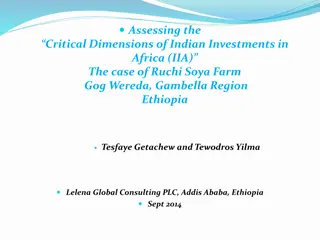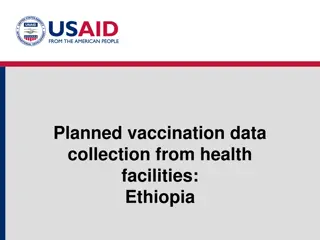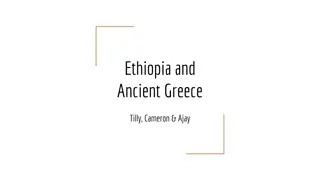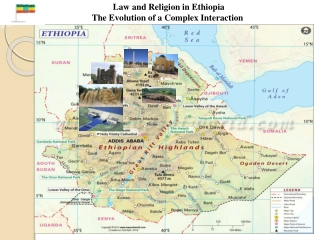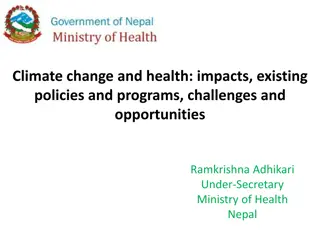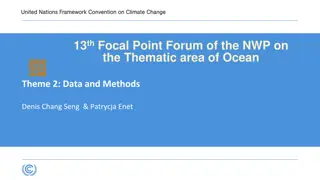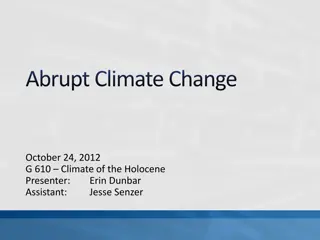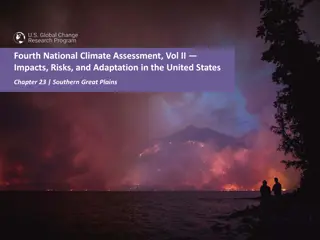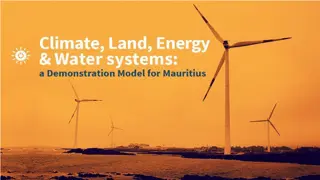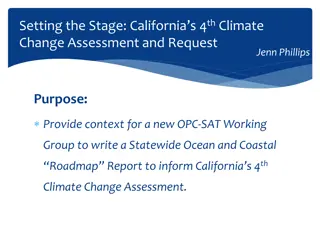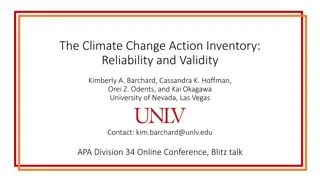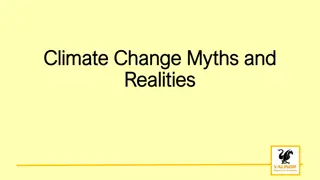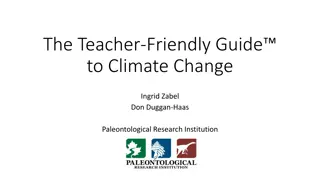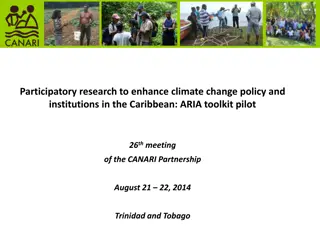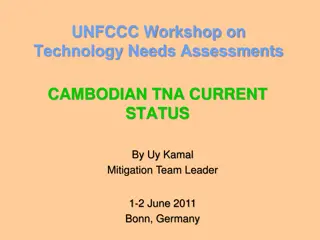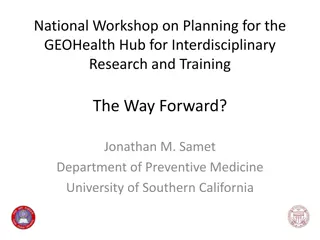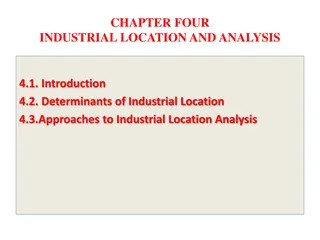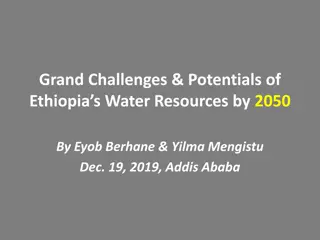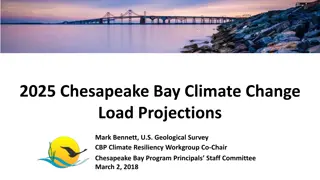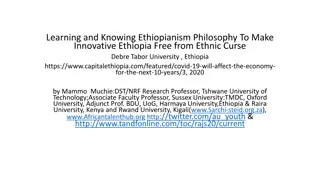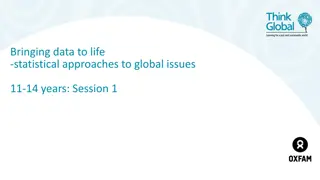Climate Change and Health Impacts in Ethiopia: Assessing Needs for a GeoHealth Hub
Climate change poses significant challenges to Ethiopia, affecting various sectors including agriculture, water, energy, and health. This necessitates a thorough situational analysis and needs assessment to address gaps in research, training, and capacity-building. The establishment of a GeoHealth Hub is crucial for understanding and mitigating the impacts of climate change on public health in East Africa.
Download Presentation

Please find below an Image/Link to download the presentation.
The content on the website is provided AS IS for your information and personal use only. It may not be sold, licensed, or shared on other websites without obtaining consent from the author. Download presentation by click this link. If you encounter any issues during the download, it is possible that the publisher has removed the file from their server.
E N D
Presentation Transcript
Situational Analysis and Needs Assessment: CLIMATE CHANGE AND HEALTH IN ETHIOPIA Establishing a GEOHealth Hub for East Africa School of Public Health, Addis Ababa University, Ethiopia & University of Southern California, USA
Acknowledgements Ministry of Agriculture, Ministry of Health (MOH), Ministry of Water Resources and Energy, Public Health Emergency Management of MOH, Federal Environmental Protection Authority (EPA), Disaster Risk Management and Food Security System (DRMFSS), and National Meteorological Agency (NMA)
Introduction Climate change is of critical strategic importance to Ethiopia To increase between 0.7 C and 2.3 C by the 2020 s and of between 1.4 C and 2.9 C by the 2050s. GDP rises or falls about a year behind changes in average rainfall. Precipitation variability: less confident than temperature changes because of regional processes. Impact of rainfall variability on GDP and Agricultural GDP growth Shifts in seasons of highest interest, yet uncertainty is the highest hold back economic progress made in Ethiopia s development and could exacerbate social and economic problems 80 25 20 60 15 40 10 5 20 0 0 % -5 1982 1983 1984 1985 1986 1987 1988 1989 1990 1991 1992 1993 1994 1995 1996 1997 1998 1999 2000 -20 -10 -15 -40 -20 rainfall variability GDP growth Ag GDP growth -60 -25 -80 -30 year
Objective assess the country s existing situation in issues related to the environment, climate change, and occupational health, and to identify gaps and needs for research, training, and capacity building projects. Methods review of available secondary data and interviewing key informants
Situational analysis The state of climate in Ethiopia high inter-annual rainfall variability non-uniform and varies by the region or period of time used for analysis Changes in the frequency of extreme events frequency and magnitude of droughts has increased over the past few decades Flooding is the second most important natural disaster and its increasing occurrence is adding more stress
Impacts of Climate Change Agriculture Water Energy Industry Transport Climate change-related health problems
climate-sensitive diseases Vector-borne diseases: malaria, trypanosomiasis, onchocerciasis, Leshmaniasis Soil-transmitted Helminthiases (STHs) Water-borne diseases: schistosomiasis, diarrhoeal disease Zoonotic diseases Air Pollution Nutrition and related impact
Policy, Adaptation and Response to Climate Change National Adaptation Programme of Action (NAPA) The Climate-Resilient Green Economy (CRGE) Nationally Appropriate Mitigation Action (NAMA) Ethiopia s Programme of Adaptation to Climate Change (EPACC)
Ethiopia has launched its Climate-Resilient Green Economy initiative (CRGE) with 2 main objectives Development initiatives Resilient economy Build the capacity of the economy to cope with the adverse consequences of climate change Resilient economy Green economy Green growth path Reach middle income threshold by 2025 and keep growth carbon neutral CRGE Abatement/ avoidance initiatives Resilience initiatives 9
Gap analysis Organizational gaps Lack of well-organized structure in the regional and Federal EPAs Lack of inter-sectoral collaboration no strong specific units in each institution that can lead and organize the climate change related activities Poor coordination and communication among different stakeholders Limited involvement of private sector and CBOs
Training gaps inadequately trained in the specific relevant techniques in the areas of climate change and health Lack of training on special skill development lack proper awareness and knowledge Research gaps inadequate research on climate change related health outcomes Lack of research capacity among experts and equipment limitation Lack of baseline information Lack of laboratories Shortage of funds Lack of specific training
Institutional capacity Lack of technologies that fit the local setting and shortage of capital to adopt the new technology Lack of trained personnel and experts on climate change and health Very long and inefficient procurement system Financial capacity financial capital Policy gaps Policies and proclamations on climate change and health Climate change has not been recognized as a public health threat in the 1994 health policy of the country. Monitoring and Evaluation
Priority needs for intervention Increasing community awareness and knowledge Trained personnel on climate change and health Strengthen research capacity Establishing climate change & health research centers. Build national & international research collaborations Updating existing and developing new policies and strategies in line with current international and national standards. Mainstream climate change and health at different organizations and academic/research institutes
Conclusion Additional and well-targeted efforts need to be in place to halt the current weak multidimensional climate change induced problems through organized community, professional, and organizational collaboration and networking. Capacity building Research Community outreach
